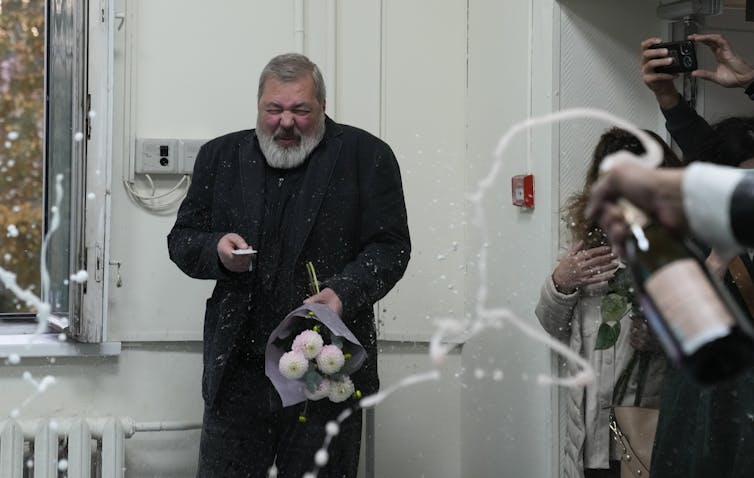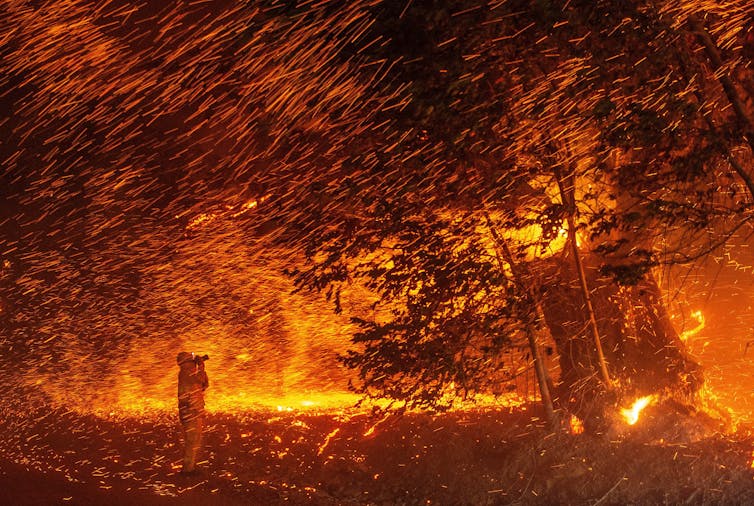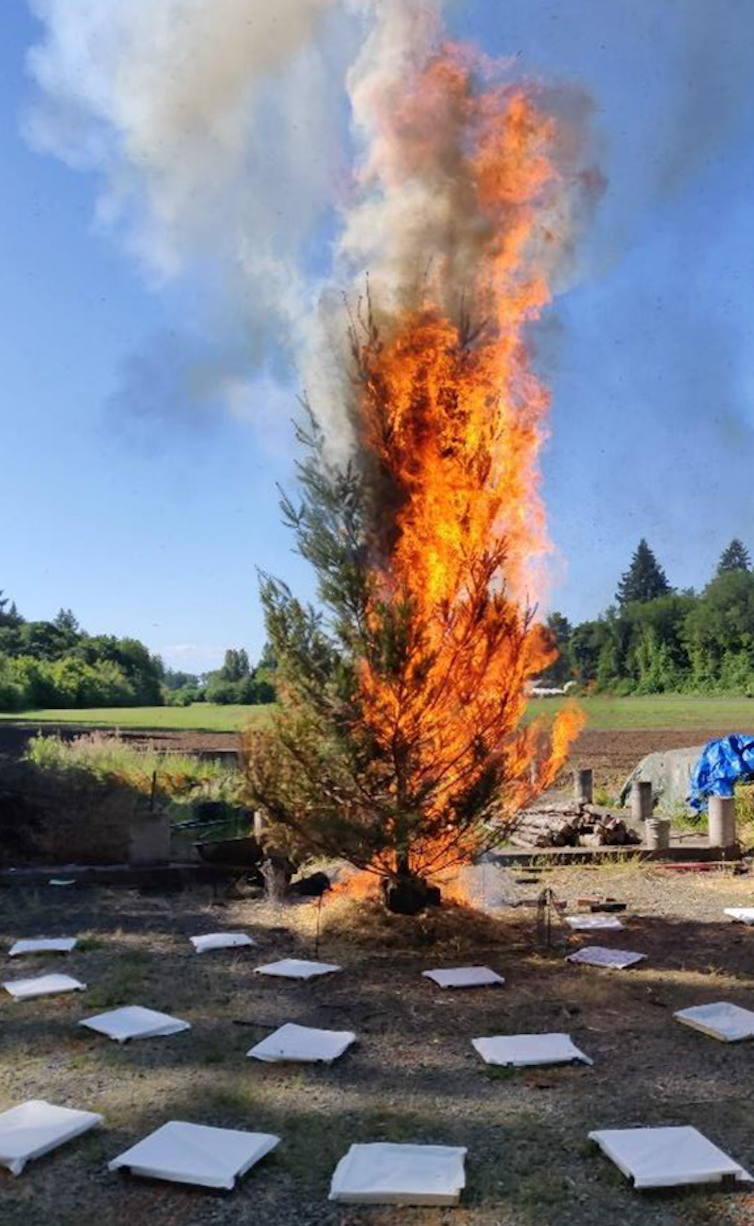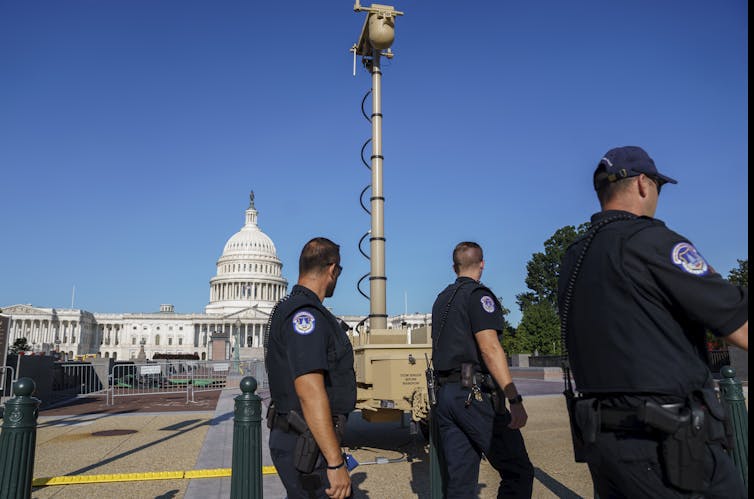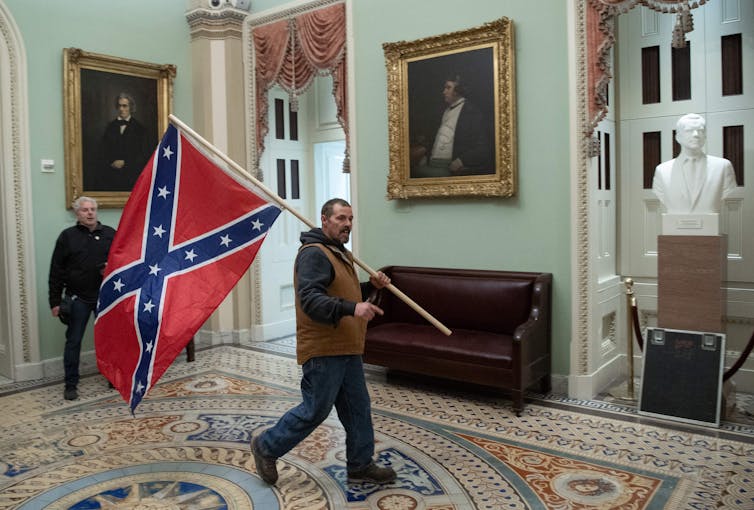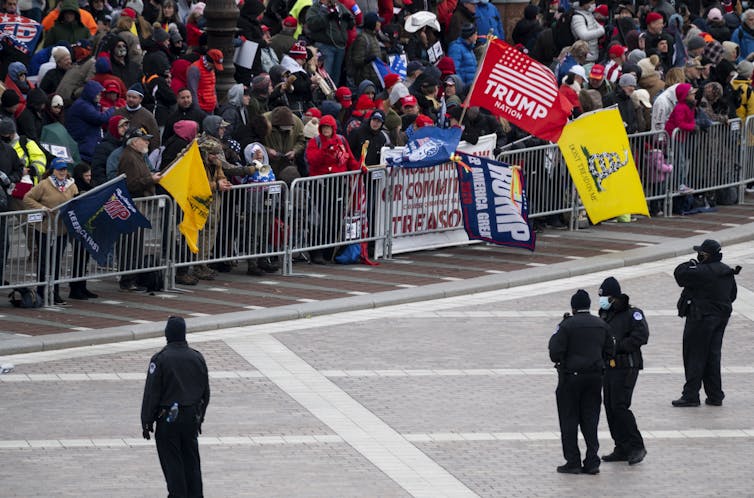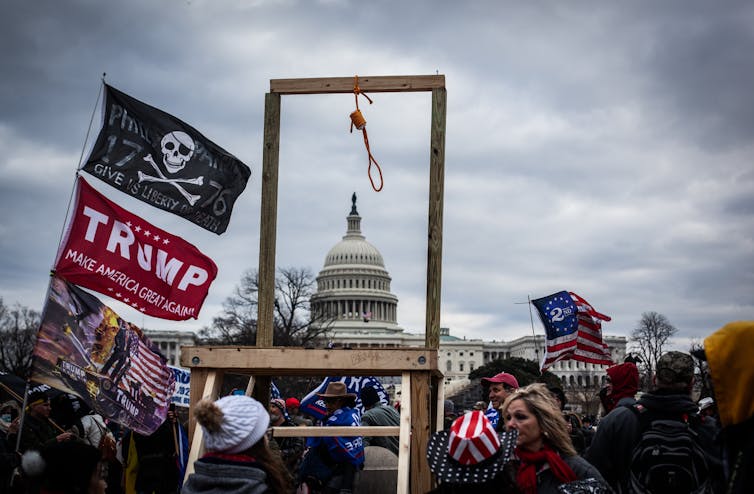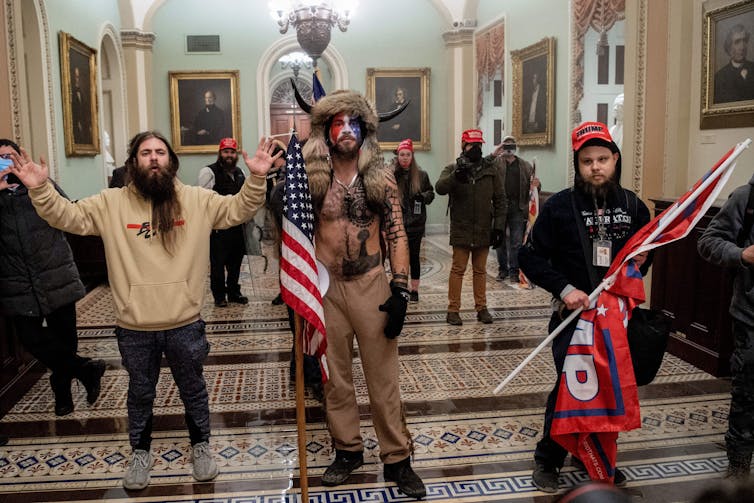Experts in autocracies have pointed out that it is, unfortunately, easy to slip into normalizing the tyrant, hence it is important to hang on to outrage. These incidents which seem to call for the efforts of the Greek Furies (Erinyes) to come and deal with them will, I hope, help with that. As a reminder, though no one really knows how many there were supposed to be, the three names we have are Alecto, Megaera, and Tisiphone. These roughly translate as “unceasing,” “grudging,” and “vengeful destruction.”
This story is spine-chilling, and I feared I would not be able to share it here, because it is a joint project of ProPublica and the Texas Tribune. When I looked closer, I did find a link, which has very specific guidlelines. One guideline is that I cannot republish any illustrations or photos – sorry about that. At the site it has some good ones. Several links will take you there, but the most obvious is probably the one in the single sentence in the next paragraph – which is present per the guidelines.
HOOD COUNTY, Texas — Michele Carew would seem an unlikely target of Donald Trump loyalists who have fixated their fury on the notion that the 2020 election was stolen from the former president.
The nonpartisan elections administrator in the staunchly Republican Hood County, just an hour southwest of Fort Worth, oversaw an election in which Trump got some 81% of the vote. It was among the former president’s larger margins of victory in Texas, which also went for him.
Yet over the past 10 months, Carew’s work has come under persistent attack from hard-line Republicans. They allege disloyalty and liberal bias at the root of her actions, from the time she denied a reporter with the fervently pro-Trump network One America News entrance to a training that was not open to the public to accusations, disputed by the Texas secretary of state’s office, that she is violating state law by using electronic machines that randomly number ballots.
Viewing her decisions as a litmus test of her loyalty to the Republican Party, they have demanded that Carew be fired or her position abolished and her duties transferred to an elected county clerk who has used social media to promote baseless allegations of widespread election fraud.
Republican politicians and conspiracy theorists continue to cast doubt on the election process across the country, particularly in areas where President Joe Biden won. They have demanded audits in states like Arizona, where the results of a Republican-led review in Maricopa County confirmed Biden’s victory. They have also moved to restrict voting in multiple states, including Texas, which passed sweeping legislation that has already drawn lawsuits alleging the disenfranchisement of vulnerable voters.
Last week, Trump issued a public letter demanding an audit in Texas. Hours later, the Texas secretary of state’s office announced that it had begun a “comprehensive forensic audit” in four of the state’s largest counties: Dallas, Harris, Tarrant and Collin. Biden won three of the four.
But Hood County stands out nationally and within Texas because it offers a rare view into the virulent distrust and unyielding political pressure facing elections administrators even in communities that Trump safely won. The county also represents the escalation of a wider push to replace independent administrators with more actively partisan election officials, said David Kimball, a professor of political science at the University of Missouri-St. Louis.
“Going back to the 2020 election, by and large, we saw election officials at the state and local level stand up to and resist efforts by Trump supporters to overturn the results,” said Kimball, who is also a ballot design and voting equipment expert at the Massachusetts Institute of Technology Election Lab. “And now this seems to me like part of the next move: Remove officials and put in somebody else who’s more to their liking.”
Kimball said such efforts can be dangerous given the power of elections administrators to control the number and location of polling places, the use of mail-in ballots and compliance with state and federal laws. In Mesa County, Colorado, for example, elected County Clerk Tina Peters, who has fueled the false narrative that Trump’s victory was stolen, allowed an unauthorized individual to copy the hard drives of voting machines, according to a lawsuit against Peters filed by the Colorado secretary of state’s office. Sensitive security information, including passwords, later appeared on far-right media sites and on social media, the lawsuit states. Peters’ attorney has denied that she did anything wrong.
Carew’s case is particularly troublesome because it “smells of political bullying” and reflects a wider rift in Texas among different factions of the GOP that has grown more pronounced since the election, said Carlos Cascos, a Republican who served as secretary of state for two years under Gov. Greg Abbott before leaving in 2017.
“They’re in power, they get somewhat cocky and they start eating their own. That’s what I’m seeing happening with the Texas GOP,” said Cascos, who this year helped form the Texas Republican Initiative, a group that was created to combat intraparty attacks led by former GOP Chairman Allen West, who is now running for governor.
Similar fissures have cropped up in Hood County, where far-right conservatives who preach allegiance to Trump have split with more establishment-aligned Republicans in demanding that Carew’s duties be placed under elected County Clerk Katie Lang, who has espoused Trump’s stolen-election theory. Lang made national headlines in 2015 after refusing to issue a marriage license to a gay couple following the U.S. Supreme Court’s landmark decision legalizing same-sex marriage.
She frequently shares “Stop the Steal” and “Impeach Biden” memes and videos, including those produced by Blue Shark Media, a popular local far-right Facebook and YouTube show that has claimed the presidential election was stolen, vigorously opposed mask mandates and repeatedly called for Carew’s ouster. The show’s founder is Mike Lang, her husband, who as a former state representative chaired the hard-right House Freedom Caucus.
Aside from saying that she would abide by the Constitution, Katie Lang declined to talk with ProPublica and The Texas Tribune about how she would approach elections management if given the role. Mike Lang did not respond to a request for comment.
The attacks have confounded Carew, 47, whose job is nonpartisan, but who has voted in Republican primaries for the past 11 years, according to public records.
Stress now invades her sleep, waking her up at night as her mind replays the barrage of accusations against her, she said in a recent interview.
“I had no idea what I was getting into.”
“God’s Will Is Being Thwarted”
The heart of the argument against Carew is as basic as the way she numbers voter ballots.
Hood County represents a growing number of areas that have begun shifting from electronic-only machines to more secure hybrid models, which provide paper ballots and are intended to help guard against fraud. A new state law requires all counties to move to voting systems that produce paper ballots by 2026. Like many elections officials in the state’s largest counties, including nearby Tarrant and Dallas, Carew uses the machines to randomly number ballots in accordance with guidance from the Texas secretary of state.
But critics such as Laura Pressley, a self-proclaimed elections expert and favorite of hard-line Republicans in the county, accuse Carew of purposefully ignoring an obscure provision of state law that calls for paper ballots to be consecutively numbered starting with one. Pressley argues that ballots cannot be audited without such numbering, enabling the possibility of election fraud. She has stopped short of claiming any wrongdoing in Carew’s handling of the 2020 election.
“Our elections are the representation of free will, and if we can’t trust that our free will is being represented legally and accurately, then God’s will is being thwarted,” Pressley, a failed Austin City Council candidate turned critic of electronic voting machines, told county commissioners in April. Dave Eagle, a county commissioner and critic of Carew’s, invited Pressley to speak at the meeting.
The push for consecutive numbering has become so potent in Hood County that commissioners in May asked Texas Attorney General Ken Paxton to weigh in on the dispute.
The pending decision could put Paxton, a Trump supporter who unsuccessfully sued to overturn presidential election results in battleground states, at odds with the Republican-led secretary of state’s office. The office has defended Carew, arguing in a July letter to Paxton that electronic voting systems must number ballots randomly so as not to violate privacy rights. It also has said that the consecutive numbering provision was intended for paper ballots, not electronic voting machines.
As state and local officials battle over how to number ballots in Hood County, experts worry that Texas’ constitutional numbering requirement is outdated and doesn’t reflect a broader shift toward protecting voter privacy.
J. Alex Halderman, an election security expert at the University of Michigan, said that over the years states have outlawed the numbering of ballots, adding that “Texas’ policy is at the other extreme.”
Colorado law explicitly states that paper ballots cannot be marked in any way that allows for voter identification. Numbering of Election Day ballots is not allowed in Illinois or North Carolina, and election laws in states including Alabama, Arizona, Mississippi and New York don’t call for the numbering of ballots.
“Where I really worry is for voters who feel socially vulnerable for one reason or another, because they are themselves members of minority groups or are in the political minority,” Halderman said. “They are going to be the ones most worried that, ‘Oh gosh, the people running the election can figure out how I voted,’ and that can deter people from voting at all or being less likely to cast a dissenting vote.”
The law dates back to a time when legislators believed that numbering ballots and voter lists would allow for easy identification and help to catch fraud. Over the years, the law was challenged by candidates who worried that it could dissuade voters from participating in elections; by 1947, the League of Women Voters was pushing for a secret ballot in Texas.
“The Texas system originally was devised so that, in case of an election contest, any voter’s ballot could be identified and the court could determine whether it had been changed,” stated a 1947 McAllen Monitor editorial supporting the shift toward more privacy at the ballot box. “But this precaution is so little needed in contrast to the far more prevalent danger of checking up on timid voters that the cure has done more harm than the original malady.”
Since then, historians have pointed to the numbering system as a facilitator of election fraud. Douglas Clouatre wrote in his book “Presidential Upsets: Dark Horses, Underdogs, and Corrupt Bargains” that George Parr, a longtime political boss in South Texas, used numbered ballots, in combination with poll lists, to identify and bribe voters to choose Democratic candidates and reject Republican ballots. Parr’s scheme is credited with helping John F. Kennedy win Texas in 1960.
Seven election experts and administrators told ProPublica and the Tribune that consecutively numbering ballots is out of step with best practices in election security and is not required to conduct effective election audits.
“In an audit you’re counting the ballots in a particular precinct to see if they match the totals that you’ve already got, and so the order of the ballots doesn’t matter as long as you are counting all of them,” said Kimball, the ballot design expert.
“Injecting Chaos”
A 14-year veteran of county elections administration, Carew left a job in Aransas County on the Gulf Coast to be closer to her ailing parents, children and growing grandchildren in north Texas.
Having grown up in Weatherford, just 25 miles away, Carew said she was proud to be running elections in Hood County. She had garnered nothing but praise from Republican leaders in Aransas County who tapped her in 2015 to be their first elections administrator.
“I can’t imagine anyone not giving anything but A-plus as a grade. She’s that good,” Ric Young, the Aransas County Republican Party chair, said in an interview. “People have to realize her credentials are impeccable and she knows what she is doing.”
More than four decades ago, Texas lawmakers passed a measure allowing counties to create an independent administrator position. Aimed at insulating elections administrators from political pressures, the law calls for them to be appointed by a bipartisan elections commission rather than by county commissioners. Elected officials are prohibited from directing the activities of administrators.
In proposing the legislation, lawmakers said the move was a step toward professionalizing elections, but they made such a switch voluntary. Of the state’s 254 counties, about half — which make up roughly 80% of registered voters — have appointed an independent elections administrator. The others are run by elected local officials, usually county clerks, who are also expected to avoid partisanship.
“There has been a consistent trend in Texas to move toward the fairer, less politicized administration of elections,” said Jeremi Suri, a history professor at the University of Texas at Austin. “In the last year, we are starting to see people try to reverse that in ways that are discouraging.”
Across the country, elections officials are increasingly feeling pressure to prioritize partisan interests over a fair democratic elections process, according to a June study issued by the nonpartisan Brennan Center for Justice and the Bipartisan Policy Center. The study, which interviewed more than three dozen elections administrators, found that 78% believe misinformation and disinformation spread on social media has made their jobs harder, with more than half saying the position has become more dangerous.
In a September news release announcing a lawsuit challenging Texas’ new elections law, the Brennan Center pointed to the negative effects it would have on elections administrators. In direct opposition to measures that made voting easier in Houston, the state’s largest city, legislators banned drive-thru polling places and 24-hour voting across the state. They also banned the unsolicited distribution of applications for mail-in ballots to eligible voters, such as the elderly, and created new criminal penalties for election workers accused of interfering with expanded powers given to poll watchers.
“These new penalties are one example of a troubling new trend of state laws that target election officials and poll workers,” the statement said. “Laws like these rub salt in the wounds of election workers, many of whom faced unprecedented threats and intimidation last year for simply doing their jobs.”
Texas’ new voting restrictions, a recent push by GOP activists to seize control of local party precincts and efforts to delegitimize the elections process in places like Hood County could have a greater chilling effect that drives out a generation of independent elections administrators, said David Becker, executive director of the Center for Election Innovation and Research, a nonprofit that seeks to increase voter participation and improve the efficiency of elections administration.
“This is an incredible delegitimization of American democracy when it comes right down to it,” said Becker, a former Department of Justice lawyer who helped oversee voting rights enforcement under presidents Bill Clinton and George W. Bush. “It is a security threat that is injecting chaos and partisanship and doubt into our election system.”
Carew entered Hood County in the summer of 2020, when Trump was already raising the specter of election fraud. Deep-seated divisions among the local Republican Party had already started to form with the selection of the next elections administrator.
A five-person commission that hires and fires elections administrators in the county was split between Carew and another candidate, Zach Maxwell, who had previously served as chief of staff to Mike Lang. According to his resume, Maxwell had never been employed by a county election office, but Katie Lang, who sits on the commission, said she believed he was committed to elections and praised his work ethic.
Republican County Judge Ron Massingill argued that the county needed someone with experience to deal with an expected “turbulent” presidential election. He eventually sided with the Hood County Democratic chair and the Republican county tax assessor in a 3-2 vote to hire Carew in August 2020, making him a target of hard-line party leaders who have framed the decision as a betrayal.
In one of her first presentations to the commissioners court a month before the election, Carew asked them to approve a $29,000 grant from the Center for Tech and Civic Life for items that included election supplies, voter education material and mail-in voting support. She told them that the grant gave elections officials discretion when using the money.
Eagle, an artisanal cheesemaker and former Tea Party leader, questioned the more than $350 million the nonprofit organization had received from Facebook founder Mark Zuckerberg and his wife, Priscilla Chan, saying the social media company had stifled conservative voices on its platform.
“This is just one more assault, in my opinion, by the progressive left to completely destroy this election cycle,” Eagle said during the meeting. He argued that by giving to nonprofits, private donors were attempting to sway local elections in favor of Democrats, and pointed to a lawsuit seeking to prevent counties from accepting such grants. The suit was later dismissed after a U.S. district judge refused to issue a temporary restraining order blocking the grants.
Hood County commissioners voted against the grant, which was accepted by 101 other Texas counties, including 85 that voted for Trump. Texas Republican lawmakers have since passed legislation that would require written consent from the secretary of state’s office for private grants exceeding $1,000 to election departments, arguing that they seek to tilt the balance of elections in favor of Democrats.
Days after the November election, Blue Shark Media alleged voter fraud in the national election and said voters should not accept the results. Mike Lang, the former state representative, and his co-hosts praised local elected officials, including Eagle, Katie Lang and Constable John Shirley, a former high-ranking member of the far-right paramilitary Oath Keepers, for attending a “Stop the Steal” rally in front of the county courthouse.
“Those are your GOP Republicans that they’re for Trump, they want Trump in there. They’re not part of the establishment that are like, ‘Oh, no, Trump’s not going to win,’” Lang said during a show posted on Nov. 8.
He did not raise concerns about the management of the local election. But since then, the show has repeatedly attacked Carew, even resurfacing her failed request for the nonprofit grant and calling it nothing more than an attempt to draw unsolicited mail-in ballots.
“We need to not only look at who we elect, but we need to look at who our elected officials hire,” Lang said during a show that month.
Calls for Carew’s Ouster
The demands for Carew’s ouster have grown so vigorous that critics have threatened political action against Massingill, the county judge, for his support of the elections administrator.
Massingill, who is quick to point out that he is a recipient of Trump’s Order of Merit for loyalty and service to the Republican Party, said the attacks on Carew from his own party are unwarranted.
“I don’t think it is fair. I really don’t. She is following the law,” Massingill said in an interview. “We want somebody in that office that is neutral and unbiased. We can’t have the Democratic Party or the Green Party or the Republican Party telling her how to run the election.”
Days before an April commissioners court meeting, Blue Shark Media aired an episode calling for Carew’s removal. The show had spent months criticizing Carew for a host of perceived slights, including her connection to the League of Women Voters, which honored Hood County and 53 others for their “outstanding” election website. Critics in the county have argued that the voter education and advocacy group is biased because it called for Trump’s removal from office after the Jan. 6 attack on the Capitol.
In another example that Carew was not ideologically pure, the show’s hosts pointed to a report that she had denied Christina Bobb, a former Trump administration official who works for One America News, access to a private training held at a conference of the Texas Association of Elections Administrators. Dominion Voting Systems, one of the country’s largest election system vendors, filed a defamation lawsuit against the network and Bobb in August, alleging “false and manufactured stories about election fraud.” The lawsuit stated that Bobb crossed “journalism ethical lines” by raising money through a nonprofit to fund a partisan review of its voting machines in Arizona’s Maricopa County. Bobb and OAN did not respond to requests for comment.
In a two-and-a-half minute report that aired in March, Bobb said that she was able to attend the first day of the conference after identifying herself as a member of the public.
On the second day, Carew, then the president of the state association, barred Bobb, saying she attempted to attend an elections certification training that was not open to the public or to members of the media. Carew said Bobb failed to inform organizers that she was a reporter. She said the Katy-based National Association of Election Officials, which puts on the training that costs several hundred dollars to attend, asked her not to allow Bobb inside.
“She was dishonest with us as to who she was with,” Carew said.
But for Mike Lang, the incident was further evidence of Carew’s bias.
“The fact is that Michele Carew, the president of the association, kicked her out, and is that election integrity and transparency? Not a bit,” he said during a Blue Shark show in April.
Two months later, Blue Shark obtained an application that Carew submitted for a position in Travis County. The application, they said, suggested that Carew was committing fraud because she stated that she was still working for Aransas County.
“How can you have any type of integrity or honesty when you can’t fill out an employment application?” Mike Lang asked on a June 21 show as he displayed portions of the application.
Carew, who said she applied for the job after months of attacks in Hood County, told ProPublica and the Tribune that she mistakenly submitted an older version of her standardized employment application. She said she was shocked to learn that critics had gone as far as to track down the application.
“Let’s have a commission meeting and let’s find another elections administrator,” Lang said during the June show in which he demanded that Massingill take action against Carew.
Despite concerns from some Republican precinct chairs about a lack of evidence, the Hood County Republican Party Executive Committee in July passed a resolution threatening a social media campaign against Massingill if he didn’t convene the county’s elections commission to discuss Carew’s termination.
“The resolution makes several big claims, but only uses hearsay to back them up,” Mark Shackelford, a precinct chair, wrote in internal Hood County GOP emails obtained by ProPublica and the Tribune. Shackelford later told ProPublica and the Tribune that he believed that without more robust evidence the resolution would be perceived as sour grapes within the county. “And it was,” he told ProPublica and the Texas Tribune in an email.
When Massingill refused, Katie Lang, the vice chair of the elections commission, stepped in and called a meeting. Aside from opponents, the meeting drew poll workers, election judges and former officials in Aransas County who defended Carew.
In the end, the elections commission voted 3-2 not to terminate Carew, marking the same split as when it hired her to be the elections administrator. David Fischer, Hood County’s GOP chairman who along with Lang voted to fire Carew, said the vote had not ended the effort against her.
The next step, Fischer said during the meeting, should be for the commissioners court to schedule a vote to dissolve the office and place elections under Lang. The move would make the office more accountable to the county’s majority Republican voters, said Fischer, who declined an interview request.
Commissioners have not said whether they plan to abolish the position.
In the meantime, Eagle and Pressley have continued their claims that Carew is flouting the law. In August, the pair addressed City Council members in Granbury, the largest city in Hood County, where Eagle advised them against contracting with Carew for its November 2021 election.
Instead, Eagle told officials, the city should hire a private company to run its election.
“I Felt Alone”
Carew has struggled to withstand the personal attacks and the accusations that she violated the law. She worries she has grown less trusting and more cynical.
“I felt alone to tell you the truth,” she said in an interview. “The worst part was being dragged through the mud over something they don’t know what they’re talking about.”
Carew said she has tried to find solace in discussions with other elections administrators, the only people who really know what she has been going through.
She feels as if she’s somehow let them down. That her experience in Hood County has overshadowed more than a decade of service as an elections manager. And she worries that she will only be known for the claims lodged at her by those trying to remove her from the role.
But Carew is sure of one thing. She has already told her husband that Hood County will be her last elections administrator position.
“I don’t feel like I am the same person I was a year ago,” Carew said. “This county has ruined me.”
The Furies and I will be back.




![]()



